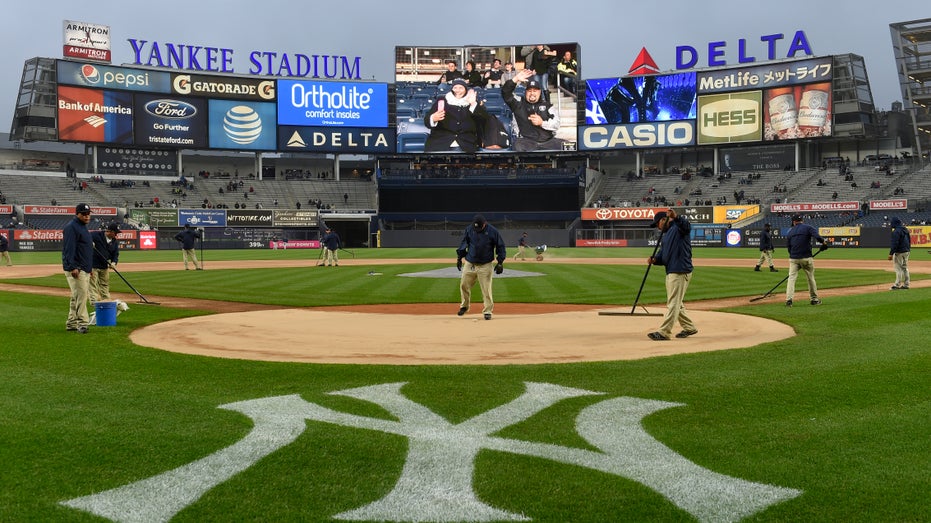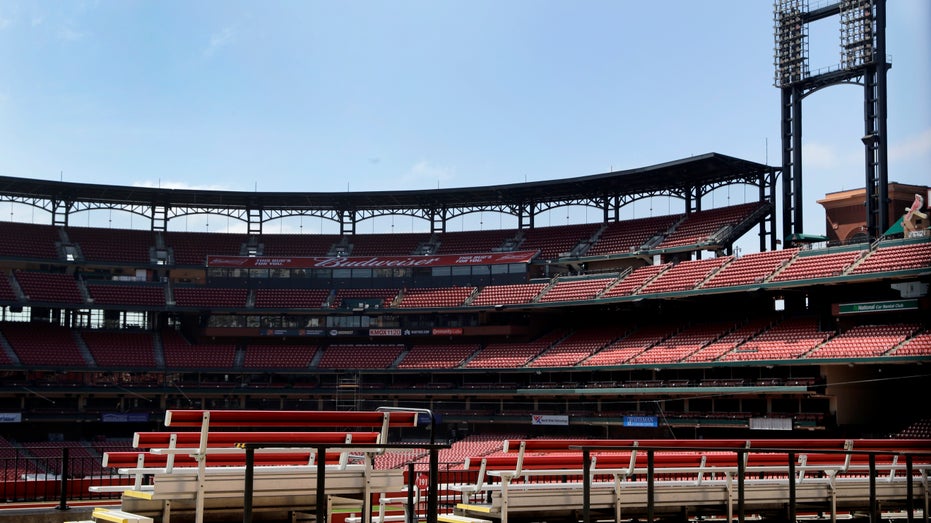After coronavirus, this is what sports stadiums and arenas will be like
When stadiums and arenas return to business as normal you are likely to find that "normal" has changed
Get all the latest news on coronavirus and more delivered daily to your inbox. Sign up here.
The coronavirus is more than a short-term health crisis. Outside of the terrible toll on human life, it has devastated large portions of the economy, especially among businesses that rely on public assembly, such as sports facilities.
When stadiums and arenas return to business as normal you are likely to find that "normal" has changed. Not since 9/11, when sports venues evolved into secure fortresses, have stadiums and arenas been challenged to adapt to an unexpected event so dramatically and quickly.
JOE BURROW WILL THRIVE WITH BENGALS, EX-SAINTS STAR COLSTON SAYS
Although I don’t have a crystal ball, it is safe to say after the pandemic recedes you will see notable differences over the months and years ahead when you come out to a live event. These trends include:
Smaller is better. The days of new, large, 100,000-seating-capacity stadiums, such as the Big House at the University of Michigan, or even 60,000-seat stadiums are coming to a close. With declining American birthrates, this was the trend anyway.
With the coronavirus fresh in everyone’s mind, you the fan, might be leery of large crowds and the health risks associated with them.
Because of this, both professional sports teams and municipalities will be apprehensive to fund new stadiums with large seating capacities, especially given they will have a harder time filling them. Your typical new Major League stadium is likely to drop to a capacity in the 20,000 to 40,000 seat range.

New York Yankees grounds crew prepare the field as intermittent rain falls before a baseball game against the Boston Red Sox at Yankee Stadium, Friday, May 6, 2016, in New York. (AP Photo/Kathy Kmonicek)
Life is but a stage. Just because you might be leery to attend mass gatherings doesn’t mean stadiums and arenas have lost their value. With billions of dollars of TV and streaming to be made from broadcast rights, major sports leagues will invest to make the location of their games more broadcast-friendly and compelling as you watch at home.
Tomorrow’s stadiums and arenas will double as elaborate TV and broadcast studios.
Technology boom - The technology boom was already underway in sports facilities before the coronavirus, but its outbreak will accelerate this trend.
Just as Peloton thinks of itself as not being an exercise company but a technology company, the same will be true for stadiums and arenas.
Sports venues will not solely be a place to host games and events but will boast some of the latest technologies in the world to connect not only with customers such as yourself, both present and at home, but also with athletes and teams, who will want cutting edge data and technology, to maximize their abilities.

Empty seats are seen inside Busch Stadium, home of the St. Louis Cardinals baseball team, March 25, 2020, in St. Louis. (AP Photo/Jeff Roberson)
Hygiene is in. During this terrible economy, do you want to invest in a sure thing? If so, look for companies who specialize in industrial cleaning for large facilities after employees or guests become ill with communicable viruses and diseases, especially those contractors who can supply preventative measures to large public facilities to help safeguard them.
Already, in Macau as the casinos open back up, guests are required to wear masks and have their temperatures taken.
Companies that can provide these types of services and supplies are about to get a large volume of business.
Lastly, you will find you can keep your cash at home as most public venues will go cashless. There will be no exchange of physical money, it will be credit only.
Copy movie theaters. Just as movie theaters had to upgrade their seating and food amenities to try to lure you back after years of decline, stadiums and arenas will follow suit in their buildings and will work to improve sports facilities seating comfort and the food amenities options that it offers to you.
Industry lobbying. While much has been made about the impact to the travel industry and the need for help for airlines and the like, by contrast, public assembly and live events whose business model has been interrupted just as much, has gotten less media attention.
Because of this, look for those who work in the public assembly industry, such as those who manage stadiums and arenas, to band together to try to bring attention for their needs as well.
Matthew Kastel is a stadium manager, as well as serves on the Board of Directors of the Stadium Manager’s Association. In addition to running a stadium, Matt is also an adjunct professor at Mount St. Mary’s University. Additionally, he sits on the Board of Advisors at the Bolte School of Business at Mount St. Mary’s. He is the co-author of Managing Sport Facilities with Gil Fried of University of New Haven.




















